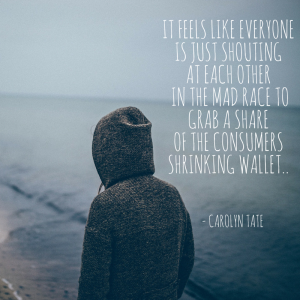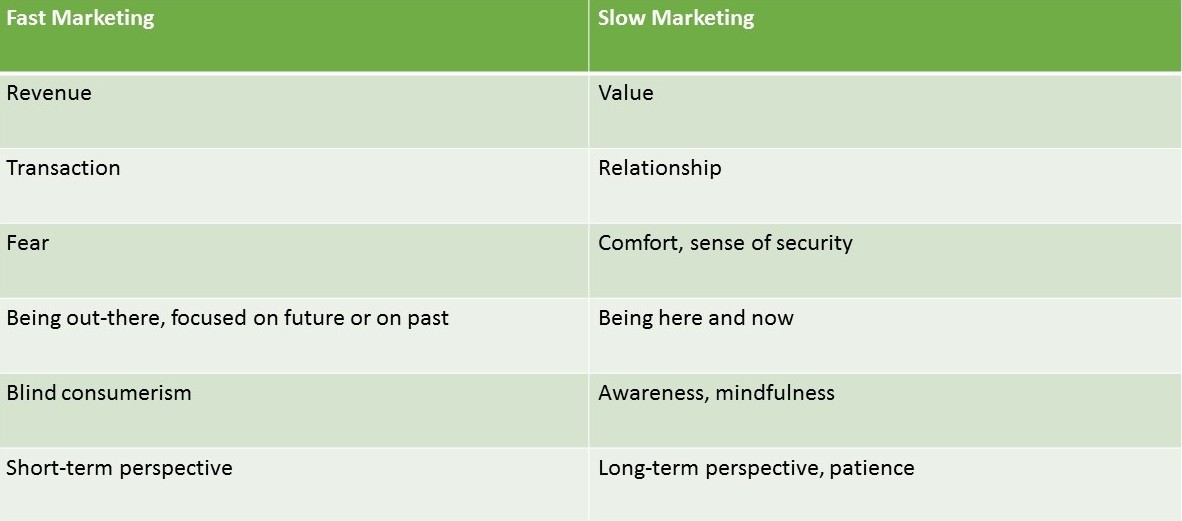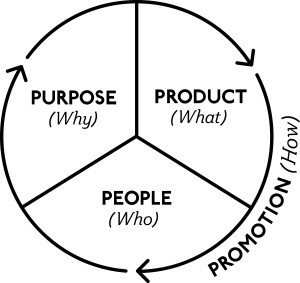 Why do we need a revolution in marketing? Because its present form annoys everyone: CEOs (who can’t see results), customers (tired of overwhelming spam and irrelevant messages) and marketers themselves – insecure, frustrated and unsatisfied with their job. Is slow movement a remedy for that condition?
Why do we need a revolution in marketing? Because its present form annoys everyone: CEOs (who can’t see results), customers (tired of overwhelming spam and irrelevant messages) and marketers themselves – insecure, frustrated and unsatisfied with their job. Is slow movement a remedy for that condition?
World’s most frustrating job
Numbers are disturbing. According to Adobe study, 48% of digital marketers assess their own performance as proficient. Only 9% believe their programs are actually working. Their supervisors share such doubts. That’s why as much as 80% of CEOs don’t trust their marketing teams (while they have much more confidence in other departments), as Fortunaise research shows. Problems pile up. Customers are tired of useless information. In 2015 we will spend 540 billion dollars on marketing – mostly to scream „Buy!” as loud as possible, without delivering any actual benefit.
Give something good
Many marketers speak up about their frustration, about dreaming of being middlemen in a valuable conversation, and ending up as spammers perceived as inefficient by their own bosses.
A need to rejuvenate the discipline has been widely discussed. One of the chances to transform it is a slow movement, which fights for worth, quality and relationships against the dictatorship of consumerism.
Italians defending food
The slow movement started in Italy when its fantastic local cuisine tradition has been endangered by the expansion of fast food. In 1986, when McDonald’s has been opened in ancient part of Rome, Carlo Petrini couldn’t take it anymore and established Slow Food – an organization with 80,000 members today. Their main claim is an objection towards the culture of fast, instant experience, where quality is sacrificed for the sake of making more and more money. The concept of slow started to grow and change other spheres of life. We do slow travel, slow parenting, and even slow investing. And – slow marketing.
Reason #1. Tiredness of constant rush
 People as Carolyn Tate (we wrote about her Conscious Marketing in our last post on most interesting new books), Tea Silvestre and Tad Hargrave speak about a need for change. “It feels like everyone is just shouting at each other in the mad race to grab a share of the consumers shrinking wallet,” says Tate. Where is the space for value, for improving customer’s life?
People as Carolyn Tate (we wrote about her Conscious Marketing in our last post on most interesting new books), Tea Silvestre and Tad Hargrave speak about a need for change. “It feels like everyone is just shouting at each other in the mad race to grab a share of the consumers shrinking wallet,” says Tate. Where is the space for value, for improving customer’s life?
Marketers are critical observers of reality around them and uncomfortable positions they find themselves in. And they protest. Lisa Nirell discussing mindful marketing advocates that marketers must create a space for creation and communication for themselves if they don’t want to be reduced to the role of order-takers at McDrive. Do we wish for a global fast food, where only quick in preparation, cheap, mediocre and harmful in a long turn products are served?
Reason #2. Customer’s responsiveness
Customers don’t react positively to bulk, aggressive messages. Research shows that they prefer personalized communication. They know that their data are collected and give them willingly to trusted companies, somewhat in exchange for individual treatment. It’s as if the user said: “OK, take my data, process them, but make use for them in a way that is beneficial also for me. Spare me all the things I don’t want. You have all information needed to do so”.
Find more stats on how customers feel about automation and personalization
Reason #3. New type of business
The third reason why we need a new kind of marketing is the rise of a new type of business: local initiatives with distinct values, like vegan coffee shops, self-developments schools, or food cooperatives. All these great projects need marketing, but they can’t go for traditional, “one size fits all” model. If they bought a mailing list or started to spam all recipients with a significant amount of bulk messages, it would undermine their credibility. Such businesses must communicate their offer and gather audience, but with subtle tools, which Tad Hargrave calls “marketing for hippies.” It stressed delivering values and building relationships.
 Don’t scare me!
Don’t scare me!
According to Slow Marketing team, contemporary marketing communication focuses on fear and creating a sense of lack. After all, “only now” means “The offer finishes soon and if you don’t take it right now, you’ll lose something!” We create a feeling that there is not enough of good things, so you have to hurry to get them. We all feel that. It;s sometimes called FOMO (Fear of Missing Out) and it causes mild neurosis.
Fear can’t be a foundation of a good relationship. Comfort and sense of security can. Building a relationship takes time and both you and your customers should feel relaxed and safe in the process.
Be a tortoise, not a hare
Fans of slow marketing like to tell the story about a tortoise and a hare racing against each other. The hare is so proud that he runs fast. Sure of his victory, he takes a nap just before the finishing line. But the tortoise is strong-willed and thus he wins at his own pace, crossing the finishing line before the hare saw what happened.
The point? Building relationship with customers is a long-distance run. Consistency, patience, and perseverance decide about success.
Individual approach
Personal treatment requires time to get to know your customers. If you don’t have direct contact with them in brick and mortar store, you can still analyze their Digital Body Language (with Marketing Automation).
What counts for slow marketing is loyalty: not one stand-alone impulsive purchase, but the purchase about which customer feels good (“Money well spent!”) and leading to next ones.
(More about that you will find in our ebook on shopping experience.)

The cycle of Conscious Marketing, according to Carolyn Tate.
Building relationship with Lead Nurturing
A great idea for long-term, recipient-focused and gradual relationship building is Lead Nurturing, especially if you construct the program properly, e.g. according to Alan Weiss pyramid (as we strongly advise) and avoiding mistakes, such as pushing leads up to the sales too quickly or forgetting about possibility of Lead Recycling.
That way you won’t overwhelm your customer with aggressive, irrelevant messages, selling them products they are not ready to buy, but rather involve yourself in a dialogue.
What do you think?
Is slow/conscious marketing only a new label to already existing trends? And can it work? Maybe it’s only suitable for a small group of businesses? Let us know what you think!
 Follow
Follow
















